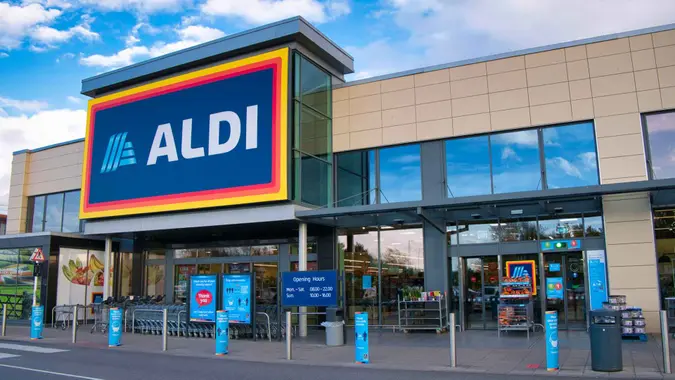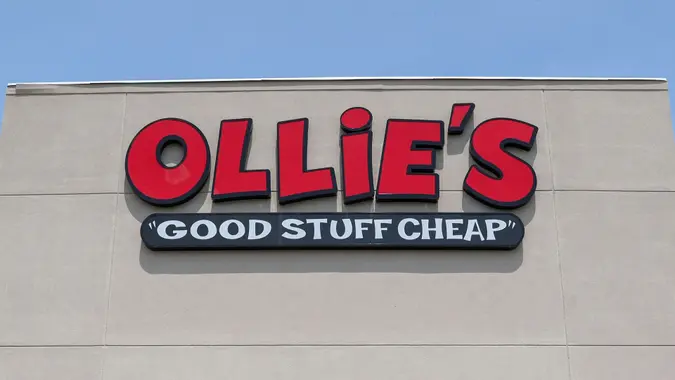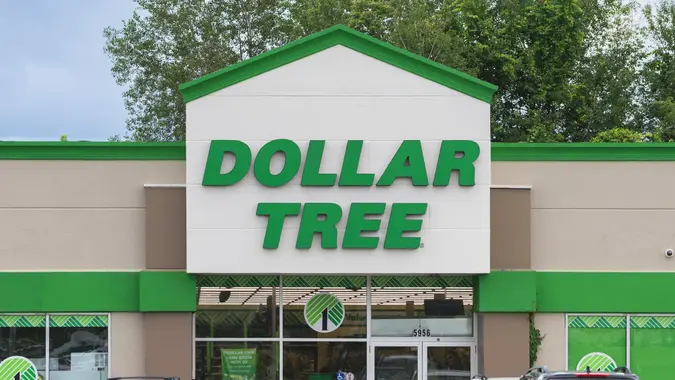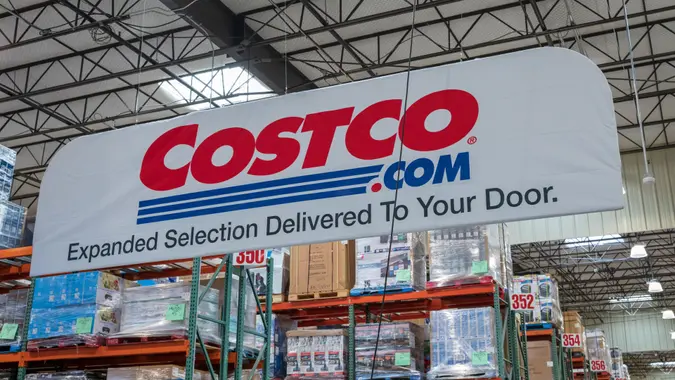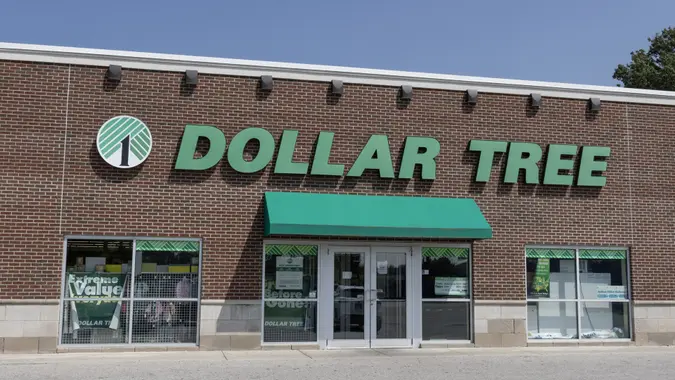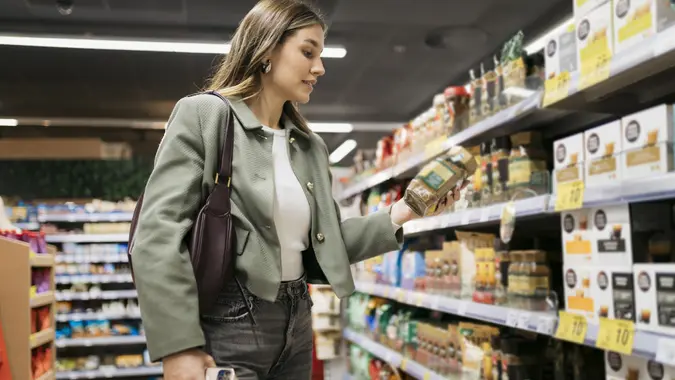3 Ways US Families Are Paying for Groceries Amid Rising Costs

Commitment to Our Readers
GOBankingRates' editorial team is committed to bringing you unbiased reviews and information. We use data-driven methodologies to evaluate financial products and services - our reviews and ratings are not influenced by advertisers. You can read more about our editorial guidelines and our products and services review methodology.

20 Years
Helping You Live Richer

Reviewed
by Experts

Trusted by
Millions of Readers
If it feels like inflation has hit your grocery trips lately, you’re not mistaken. The cost of many items that line the grocery shelves has increased nearly 21% since early 2021. However, there’s good news for shoppers.
According to a report by Axios, “The inflation rate for “food at home,” basically the stuff you buy at the supermarket, is really low these days, with prices rising just 1.1% over the last year.”
Even though inflation has slowed, many families have had to find new ways, including taking on debt, to pay for groceries amid rising costs.
Credit Cards
One popular way to pay for groceries is using credit cards.
According to the Urban Institute, in 2023 “33.4% of adults paid for groceries with a credit card and repaid the bill in full, 20% of adults paid less than the full balance on a credit card but always made the minimum payment and 7.1% who did not make the minimum payment.”
Using a credit card to pay for groceries and not being able to handle the payments can compound financial problems. According to the Institute, “Families who were already facing food hardship were most likely to take on debt to pay for groceries, which could leave them less able to meet their basic needs in the future.”
Buy Now, Pay Later
You’ve probably heard about shoppers using Buy Now, Pay Later (BNPL) apps to finance expensive items. It turns out they’re being used to meet basic necessities like food as well.
Approximately 20% of adults said they used BNPL in the past year, including more than 3% who reported using it to pay for groceries. Further, 37% of those who used BNPL for groceries said they missed payments on these loans. Like missing credit card payments, this can compound financial difficulties.
Savings
While most people build an emergency fund for unplanned, big expenses like car repairs, many are having to use their rainy day funds for day-to-day costs, including food.
Around 20% of adults reported paying for groceries with savings they didn’t intend to use for routine living expenses. This leaves them with less liquid savings for a large expense and can contribute to increased debt loads. Not to mention, with inflation and other economic challenges, it may take a great deal of time to replenish those savings.
More From GOBankingRates
 Written by
Written by  Edited by
Edited by 



